Full-Scale Testing of BarChip
Fibre Reinforced Precast Tunnel Segments
Part 2 – Material Mechanical Characterisation
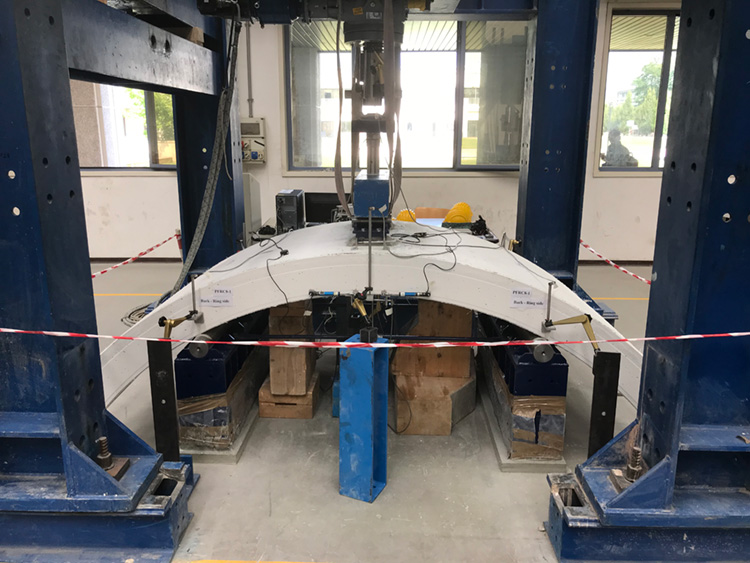
Have you heard that you can’t use synthetic fibre reinforcement in a segmental tunnel lining?
We’ve heard it too, and naturally we disagree. Even though BarChip is already reinforcing multiple segmentally lined tunnels, we wanted to academically prove it isn’t true, so we engaged the engineering team at the University of Brescia, Italy. The brief was simple, conduct a series of full-scale tests of BarChip fibre reinforced segments to show that BarChip is a suitable material for precast tunnel segments.
The results show without a doubt that BarChip is a suitable material for use in precast concrete tunnel segments.
To begin the project, an extensive testing program was carried out prior to casting segments, which was used to optimise the segment mix and set a base line for future reference. The details of these tests are outlined here.
Material Mechanical Characterisation
Reinforcement (of any type) performs differently depending on the concrete mix. To optimise for full scale testing, beam tests using a typical segment mix with 4, 6, 8 and 10 kg/m3 of BarChip 48 macro synthetic fibre were tested.
For each dose rate, 12 beams were cast for testing in accordance with EN 14651 (notched beam test). Six cubes and six cylinders were also cast to determine compressive strength.
Concrete class C50/60 was the target for the base concrete, using the same mix design for the four different dosages, except for the superplasticizer, which was adjusted in accordance with increased fibre dosage. The final mix can be seen in Table 1.

Table 1: Concrete Mix Design for Full-Scale Tunnel Segment Trials
Compressive strength testing was taken at 28 days and showed that all samples were cast well and produced consistent results with a maximum coefficient of variation between samples of 7%.

Table 2: Compressive strength of fibre reinforced concrete mixes
For each dosage the samples produced consistent and reliable results, which can be seen in Figures 1 through 5.
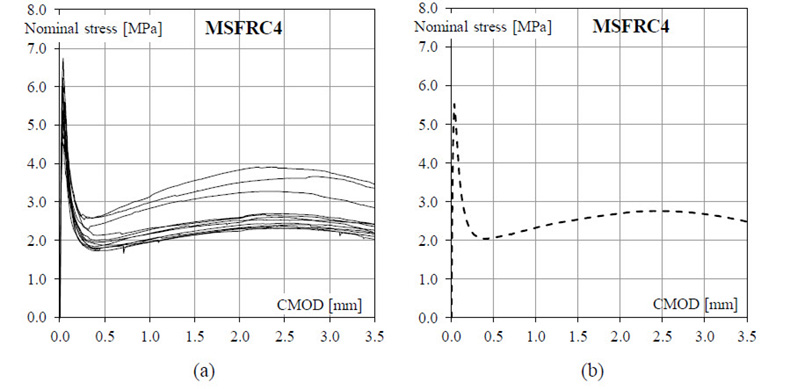
Fig 1: 4 kg/m3: Nominal stress vs. CMOD curves (a) and Nominal stress vs. CMOD mean curve (b).
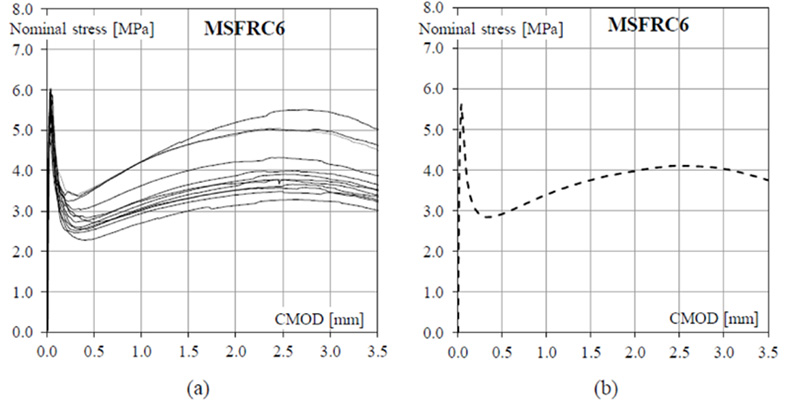
Fig 2: 6 kg/m3: Nominal stress vs. CMOD curves (a) and Nominal stress vs. CMOD mean curve (b).
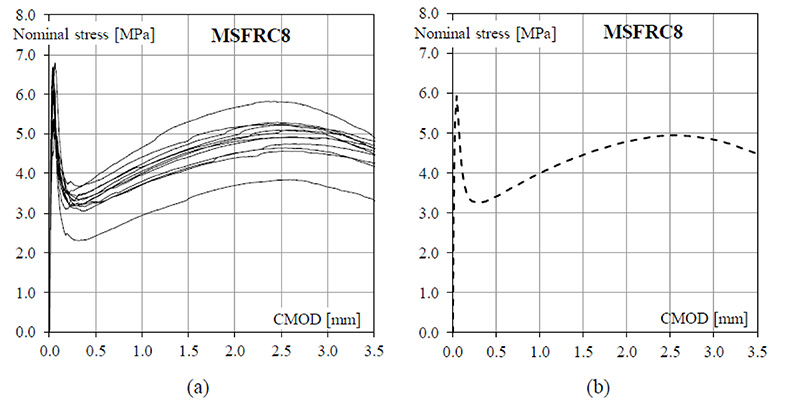
Fig 3: 8 kg/m3: Nominal stress vs. CMOD curves (a) and Nominal stress vs. CMOD mean curve (b).
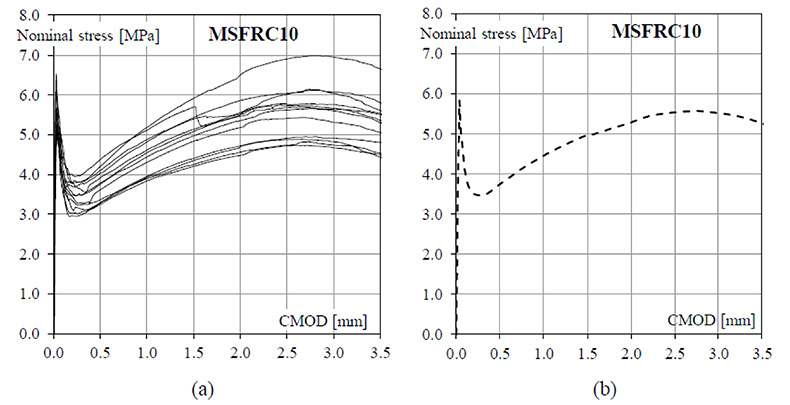
Fig 4: 10 kg/m3: Nominal stress vs. CMOD curves (a) and Nominal stress vs. CMOD mean curve (b).
When comparing the mean curves, it’s clear that with each increase in dose rate there is an increase in performance. The performance of the 8kg and 10kg mix are particularly good and demonstrate a significant flexion hardening behaviour to just beyond 2.5 mm of CMOD. Further, the onset of recovery, i.e. the transition of stresses on the fibres distributed over the cross-section, is earlier with increasing dose rate, which in return improves crack width control.

Fig 5: Nominal stress vs. CMOD mean curve comparisons.
Table 3 shows the summary of results for all samples. It should be noted that the results were very consistent, with a maximum variation in LOP/crack load of 11% COV and a maximum variation in residual flexural performance of 19% COV.

Table 3: Summary of beam results from FRC material characterisation testing.
Analysis of the mean and characteristic values were calculated to determine the performance requirements according to Model Code 2010, as seen in table 4.

Table 4: FRC adequate for structural purposes according to fib Model Code 2010.
Conclusions
The results show that the 6kg, 8kg and 10kg mixes all meet the ductility performance requirements for structural purposes according to Model Code 2010.
In the end, the 8kg mix was chosen for the full-scale segment and point load tests. This mix gave excellent results with a Model Code 2010 class of 2.5e and was relatively easy to mix and work with.
If you want to discuss the results in more details contact us at info@barchip.com.
In our next post, we’ll summarise the results of the full-scale segment flexural testing. Follow the links below to find out now.
- BarChip Tunnel Segment Testing Part 1 – Introduction, Reference Tunnel & Reinforcement Solutions
- BarChip Tunnel Segment Testing Part 3 – Full-Scale Flexural Testing
- BarChip Tunnel Segment Testing Part 4 – Full-Scale Point Load Testing (coming soon)

